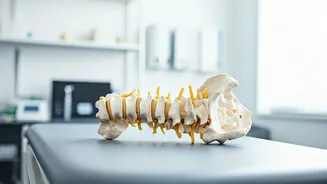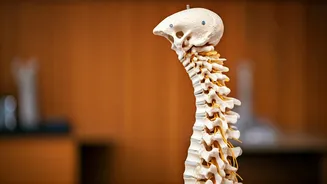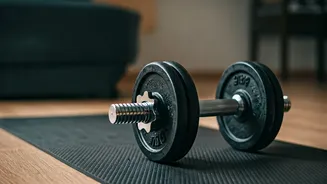Kneeling Back Extension
The kneeling back extension is a gentle exercise ideal for those experiencing back pain. To begin, position yourself on your hands and knees. Make sure
your hands are directly beneath your shoulders and your knees are under your hips. Next, gently arch your back, allowing your stomach to move towards the floor. Simultaneously, lift your head and look up towards the ceiling. Hold this pose for a few seconds, breathing deeply. Then, slowly reverse the motion, rounding your spine as if you're trying to touch your chin to your chest. Repeat this sequence several times, coordinating your breath with your movements. This exercise helps to mobilize the spine and ease stiffness, promoting flexibility and reducing discomfort in your back. Regular practice can gradually improve your posture and alleviate minor pain.
Pelvic Tilts Exercise
Pelvic tilts are another simple yet effective exercise for managing back pain. Lie on your back with your knees bent and feet flat on the floor. Maintain a neutral spine position, meaning there should be a slight gap between your lower back and the floor. To perform a pelvic tilt, gently tilt your pelvis upwards, pressing your lower back against the floor. Focus on using your abdominal muscles to make this movement. Hold this position for a few seconds, then relax. Next, tilt your pelvis in the opposite direction, arching your lower back slightly away from the floor. Again, hold the position briefly before returning to neutral. This exercise helps strengthen core muscles and stabilize the spine, which is crucial for reducing pain and improving posture. Doing pelvic tilts regularly can provide relief from discomfort and aid in preventing future episodes.
Master the Plank
The plank is a renowned exercise for overall core strength, and it is also beneficial for back pain. Begin by getting into a push-up position, but instead of resting on your hands, support yourself on your forearms. Your elbows should be directly beneath your shoulders, and your body should form a straight line from head to heels. Engage your core muscles, as if you're trying to pull your belly button towards your spine. Hold this position for as long as you comfortably can, typically starting with 20-30 seconds, and gradually increasing the duration as you get stronger. The plank strengthens the core muscles, which support the spine and help reduce back pain. It is an effective exercise for building endurance and improving stability, thereby preventing future back pain. Maintain a straight posture to maximize its benefits.
Knee Rolls Explained
Knee rolls are a gentle exercise that promotes spinal mobility and relieves back pain. Lie on your back with your knees bent and your feet flat on the floor. Keep your arms extended to your sides to help with balance. Gently let your knees fall to one side, keeping your back flat on the floor. Hold this position for a few seconds, feeling the stretch in your lower back. Return to the starting position and repeat the exercise, allowing your knees to fall to the opposite side. Continue alternating sides, coordinating your breathing with the movement. This exercise helps to loosen the muscles around the spine and improve flexibility. The gentle twisting motion reduces stiffness and enhances blood flow to the back muscles, easing discomfort and improving spinal health. Consistent practice can lead to improved mobility and a decrease in back pain episodes.
Double Knee Hug
The double knee hug is a simple stretch that soothes lower back muscles. Lie on your back with your knees bent and your feet flat on the floor. Gently bring both knees up towards your chest, clasping your hands around your shins or the back of your thighs. Gently pull your knees towards your chest, feeling a stretch in your lower back. Hold this position for about 30 seconds, breathing deeply and relaxing your back muscles. You can gently rock side to side for an added massage effect. This exercise can help reduce tension and alleviate pain by gently stretching the muscles in the lower back. Regular practice can enhance spinal flexibility and ease overall discomfort.












